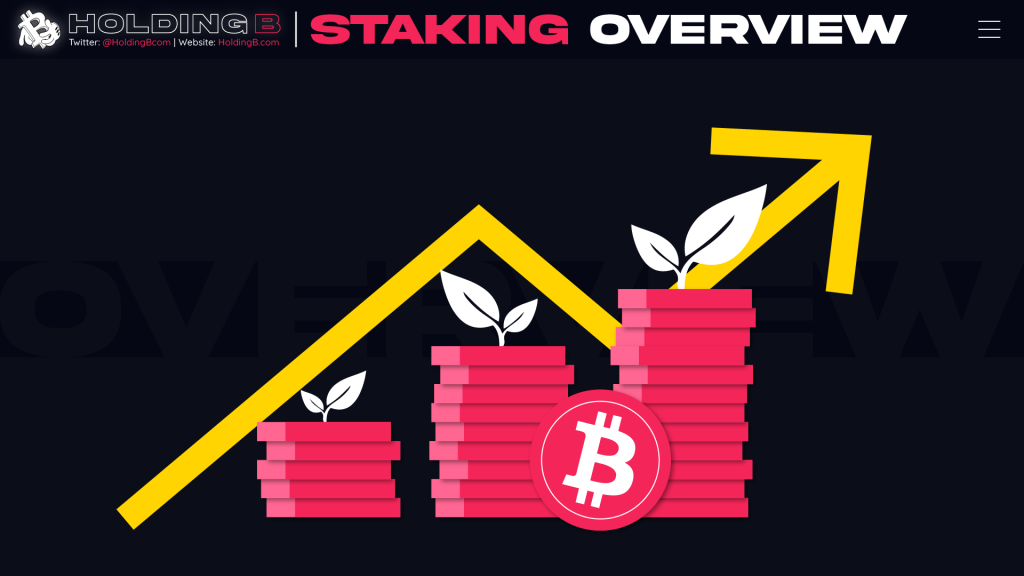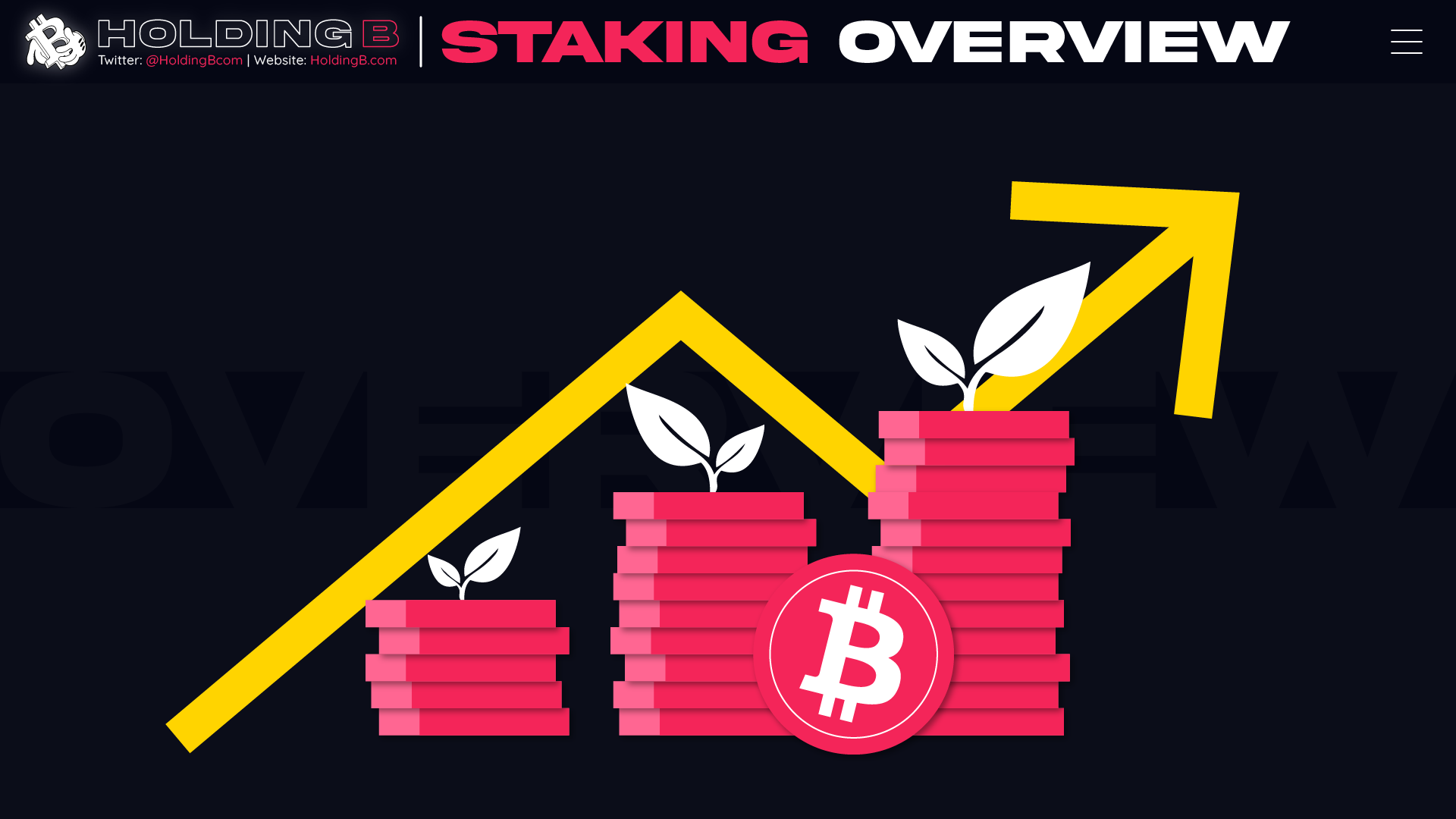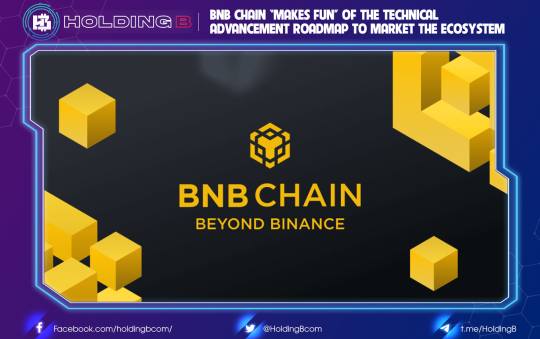WHAT IS STAKING ?
Staking Coin – one of the most important concepts promoting investment mechanisms and transaction methods using blockchain technology and related cryptocurrencies. Staking involves locking your digital assets like BitCoin, Ether, USDT for rewards.
Every transaction on the blockchain requires verification – this kind of reward system helps users with crypto to verify transactions and support the network essentially to earn crypto. So what is Staking Coin and how can users learn how to Stake Coin to earn cryptocurrency? This article will help readers find out an easy-to-understand answer.

Staking Coin Overview for Beginners
Staking is the holding of a certain amount of cryptocurrency in the electronic wallet of a Blockchain project for a certain period of time to receive rewards. The reward that investors receive depends on Coin stake salary and stake duration.
Staking is sort of an evolution of bitcoin mining, the process that makes bitcoin’s blockchain work. Mining is a mechanism known as Proof of Work (PoW) where the quickest computer to complete the task (such as processing a translation or adding data to the blockchain) gets rewarded in crypto. This means every computer on the network is constantly scrambling to try and complete things first, which uses a lot of energy.
Staking uses a system called Proof of Stake (PoS). This works by the blockchain randomly assigning a computer to carry out the task at hand. To stake, you put aside part of your holdings of the blockchain’s native coin (your ether for Ethereum’s blockchain, for example) and the amount you stake gives you a probability of being assigned the task.
The more you stake, the higher the chances you’ll be doing the task (processing transactions, validating information and more). When you complete the task, as with mining, you’re rewarded. But you can also earn interest for stake generally on some blockchains.
So it’s fairer. It’s also better for the planet because everyone isn’t scrambling to be first, so way less energy is used up. That’s why people think Ethereum could overtake bitcoin one day.
Not everyone who owns crypto on PoS blockchains takes part in that proof of stake. But they can, and there are rewards for it.
WHAT DOES STAKING INVOLVE?
When you stake crypto, you offer up part of your wallet to the blockchain, like collateral. This means the fraction of your wallet you’ve staked is locked up for a certain period of time. You can unstake it, and it’s still your money, but sometimes this can’t be done immediately.
Also, with some blockchain, you’ll need a minimum amount of the native coin to begin to stake. For example, Ethereum requires you to have a minimum of 32 ETH to get involved. That’s roughly £110,000 at the time of writing. Others are more accessible, though. Cardano’s minimum is one ADA (that’s the name of Cardano’s cryptocoin), which is around £1.50 at the time of writing.
In terms of what it involves on your part, there’s usually not much to it, actually. It’s all pretty passive – you don’t manually do much aside from setting up how much of your crypto you want to stake.
- For example: to stake Solana on the wallet Exodus, you simply tap a couple buttons and you’re good to go. It’ll take a good few days to start earning rewards and it takes a few days to unstake. If you want to unstake, you’ll have to unstake the entire amount you staked in the first place. This then goes back into your holdings (your balance).
BENEFITS OF STAKING COIN
Benefits of Staking Coin for investors when trading cryptocurrencies
One of the main benefits of Staking Coin is that it eliminates the need to constantly buy expensive and energy-intensive hardware. The system offers guaranteed profits and a predictable source of income.
This system is unlike a proof-of-work system, where cryptocurrencies are rewarded through a mathematical process with low payout probabilities.
Another benefit is that the value of staking coins is not depreciated like ASICs and other mining hardware. Equity is only affected by market price movements.
HOW STAKING COINS WORKS ?
Staking is an alternative to cryptocurrency mining. It involves holding cryptocurrency in a digital wallet to support the security and operation of a particular blockchain network. By ‘locking’ or dumping cryptocurrencies, users can get stake rewards.
Staking Coin is active on crypto wallets
In most cases, Staking Coins can be done directly from your crypto wallet, although it is also possible to do so through one of the services offered by cryptocurrency exchanges. death.
For example, cryptocurrency exchange Binance offers a staking option that allows users to earn rewards in a simple way – all you have to do is keep your coins on the exchange.
To fully understand what staking is and what staking tools are used, you need to understand how Proof of Stake (PoS) works. PoS is a consensus mechanism that allows blockchains to be more energy efficient and environmentally friendly while maintaining their degree of decentralization (at least in theory). Let’s take a closer look at what PoS is and how Staking works.
PoS is a consensus mechanism that allows blockchains to work more efficiently in the Bitcoin exchange
Keep coins in wallet or smart contract
The standard methods for staking are usually keeping coins in your wallet or locking them in a smart contract (masternode).
Some coins have added randomness to the staking and voting process so that it is difficult for bad players to manipulate the results. The process can be similar to a lottery, where the amount of cryptocurrency you hold is equivalent to holding a certain number of lottery tickets.
The standard method for staking is usually to keep coins in your wallet or lock them in a smart contract (masternode).
Fixed systems can also allow for delegation where each individual delegates their voting rights and earnings to a trusted party. Those representatives then earn all the rewards for validating the block and pay their loyal supporters some form of dividend in return for their votes.
DISTINGUISHING STAKING AND LIQUIDITY MINING (YIELD FARMING)
Staking and Yield Farming have similar concepts but are fundamentally different. Staking involves validators to lock their coins based on the PoS consensus algorithm.
While Yield Farming (liquidity mining) boasts a lending pool that allows token holders to generate passive income in exchange for interest. When comparing Staking and Yield Farming, using Staking is less risky than trading BitCoin cryptocurrency.
Proof of Stake
Once you know how Bitcoin works, you will become familiar with the PoW or Proof of Work. This mechanism lets the transactions get gathered into blocks. These blocks then get linked together for the creation of the blockchain. Specifically, miners compete so they can solve a complex puzzle in mathematics. The one who solves this will have the right to have the following block added to the blockchain.
There is data that Proof of Work is a highly robust mechanism that facilitates consensus in a decentralized way. The problem with this is that so much arbitrary computation gets involved. Miners compete to solve a puzzle that does not serve any purpose other than making sure that the network is secure. In itself, this can cause the computation in excess to get justifiable. In case you feel like wondering if there are other ways to have decentralized consensus maintained without the need for a high cost in computation, the answer to this is Proof of Stake. Here, the main idea is to have participants lock their “stake” of coins at certain intervals wherein the protocol assigns the right to one of them randomly so they can have the following block validated. The probability of getting chosen is typically proportional to how many coins are available. Having more coins locked up can increase the chances.
It determines who the participants create a block that doesn’t have a basis on how they solve challenges in the hash as it is with the Proof of Work. Instead, it gets determined by the amount of staking coins that they hold. People who argue that the blocks get produced through staking allow blockchains to have scalability at a higher degree. That is among the reasons why the Ethereum network planned for the migration to PoS from PoW in a set of technical upgrades that they collectively referred to as the ETH 2.0.
Who created the Proof of Stake?
Proof of Stake initially appeared from the 2012 paper of Scott Nadal and Sunny King for Peercoin. They described this as a design in peer-to-peer cryptocurrency that they derived from the Bitcoin of Satoshi Nakamoto.
The Peercoin network got launched with a hybrid PoS/PoW. It mainly uses the PoW so that the initial supply will get minted. Yet, it did not become required for the network’s sustainability in the long term, which is why its significance gradually got minimized. In reality, the security of a lot of networks was reliant on the PoS.
DPoS (authorized proof of stake)
Developed by Daniel Larimer in 2014 is this mechanism’s alternative version that they referred to as DPoS or Delegated Proof of Stake. It initially got used as a part of the blockchain BitShares, but the other networks eventually adopted the model. Included here are EOS and Steem that Larimer also made.
Users are allowed by DPoS to have their coin balances committed as votes wherein voting power is proportional to the held number of coins. These votes then get used to having many delegates elected. These delegates manage the blockchain on their voters’ behalf to ensure consensus and security. The staking rewards typically got distributed to these elected delegates, who then had part of their rewards proportionally allocated to their electors’ contributions.
The model DPoS lets the consensus is achieved by validating nodes in a lower number. Because of this, it tends to have the network performance enhanced. On the other hand, this can lead to decentralization to a lower degree while the network becomes reliant on a selected small group of validating nodes. These are validating nodes that handle the blockchain’s operations and overall governance. The processes of having consensus reached are where they participate in defining the critical parameters of authority. To put things simply, DPoS lets the users have their influence signaled through the network’s other participants.
DPoS Witness
These witnesses are responsible for and rewarded for creating and adding blocks to the blockchain. Each stakeholder is only allowed one vote per witness, with the witnesses with the most votes being elected. Stakeholders can vote for as many witnesses as they like, as long as at least 50% of stakeholders believe that adequate decentralization has been achieved through the number of elected witnesses.
Voting for witnesses is an ongoing process. This motivates witnesses to carry out their functions to the highest standards or risk losing their positions. There is an additional reputation scoring system built into the network to help stakeholders better assess the quality of witnesses.
When a cryptocurrency is based on DPO consensus, a selected group of witnesses is replaced. It could be at a fixed time, once a day or once a week. That is to make sure each witness gets one turn to generate a block.
If they don’t do so within the allotted time, it often results in a witness being ignored and negatively affects their reputation score.
Participants
Besides that, there are other participants called delegates. The elected delegates are similar to the witnesses. They are responsible for maintaining the network and can recommend changes that need to be voted on.
Once these changes have been submitted, stakeholders will vote on whether the proposed changes should be implemented. Whether or not an incentive system rewards delegates will vary depending on the implementation of the DPoS consensus mechanism.
In addition, the DPoS mechanism requires users to also vote on a group of delegates that oversee blockchain governance. Although delegates do not play any role in controlling the transaction, they can propose to change the size of the block and the amount that a witness must pay in exchange for validating a block. Users of the blockchain can then vote on changes proposed by the delegates.
CLASSIFICATION OF STAKING
Currently, there are two popular staking methods known to many investors: Staking Cold and Staking Pool. So what are the characteristics and implementation methods of these two methods? Find out below.
Staking Cold
There are different ways to Staking Coin and one of them is Staking Cold. Cold Staking consists of Staking Coins or coins that are stored offline, usually in hardware wallets. This is usually done for security reasons as hardware wallets are harder to hack than web-based wallets or exchanges.
Staking Cold is a method for Staking Coin to ensure security and to be able to store coins offline
With Cold Staking, users have to keep their crypto in designated offline wallet to earn crypto. Transferring funds to a new address will result in the participant losing Staking rewards.
Staking Pool
Most blockchains that run on PoS allow you to stake your own coins. However, sometimes this can prevent you from getting the most out of your staking funds.
Stake Pool operators run a staking pool. And these are network participants with the skills and hardware to reliably ensure consistent uptime of a node, which is essential in ensuring the success of the PoS protocol and network. blockchain.
To take advantage of the full benefits of staking, you must stay connected to the network 24/7. Even a short-lived misfire can disrupt your earning potential, setting you back. But joining a staking pool can provide a way around this.
Staking pools are a way to Staking Coin without having to run it on your own hardware or with a virtual private server provider. A staking pool runs a master node on a server with a high-speed connection to the internet and always serves the blockchain.
Because they have more users behind them, staking pools also have larger stake sizes, and that increases the odds that they will be chosen to write a block or vote for a block to be written to the blockchain. For that reason, staking pools are seen as an easier way to earn crypto with more frequent and consistent rewards.
ADVANTAGES AND DISADVANTAGES OF STAKING
Staking is a process that involves buying and holding cryptocurrency in your wallet and making a profit from it. All in all, it doesn’t have any downsides that might stop you from trying. It doesn’t carry any risk as you only lease your funds to validators but still have full control and ownership over them.
Advantages of Staking
The main advantages of Staking Coin are passive income generation and low entry. If you use a staking pool or an online service, staking can be simple and easy to do. It is also significantly more energy efficient than mining and less risky than trading.
Disadvantages of Staking
The only drawback comes from the expected return as some coins are notoriously volatile or have very high rates of inflation. The decrease in the value of the coin can also reduce the value you earn.
Whenever you staking a coin, you need to look at its real-world application. Many Staking coins are created just for Staking.
This does not give them any particular advantage as a means of payment or hedging. The reward rate can be high, but the potential for use is low, which means you may get low or no value coins in the future.
RISKS OF STAKING
As with any type of investment, staking has its risks. While it’s unlikely that you’ll see your entire account go kaputz overnight, as may happen with certain stocks, there are some things to be aware of before you start staking:
- Crypto is volatile. First and foremost, cryptocurrency is a volatile investment, and as such, price swings are common. The volatile nature of crypto and corresponding price swings can have you rethinking your strategy on a daily basis — so, volatility is something to keep in mind.
- There are lock-up periods. Staking involves locking up your funds for a period of time, and if you lock up your holdings for months (or years), you won’t have access to them for some time. Also important: There may not be a way to “unstake” your holdings once you start.
- Beware of “slashing.” If you’re staking outside of an exchange, by setting up and configuring your own node, you may make a mistake and incur penalties. This is called “slashing,” and is used against “validators that are performing poorly or dishonestly,” says Welch. The result? “A portion of the funds can be taken as a penalty,” he adds.
- You’ll have to pay fees. Yes, there are fees associated with staking, particularly if you do so through an exchange. The fees vary by exchange, but Welch says they’re typically a percentage of a staker’s rewards.
FREQUENTLY ASKED QUESTIONS
Below is a summary of questions that investors often ask when learning about the Staking Coin method in cryptocurrency transactions.
Is Staking Profitable?
Staking Coin is becoming increasingly popular, with many users describing it as ‘profitable’ as mining. However, unlike Coin mining – it does not come with significant electricity and overhead costs.
The amount you earn on staking depends on many factors, such as the block reward, the amount of supply locked, the size of the staking pool, and the highest possible reward, among others. In general, the longer you hold (staking) funds, the higher the payout will be. However, the value of the coin also needs to be taken into account when calculating returns.
How to Authorize Staking Rewards?
Staking reward authorization varies from coin to coin. Some may require you to visit the respective project or coin’s dashboard and import your wallet into MetaMask (or connect your hardware wallet to MetaMask) to authorize the operator.
Once you have entered the amount of coins you want to authorize, you must specify the Beneficiary or Reward Address. Your reward from staking coins will be sent once generated by staking on network activity.
What are the rules for Staking Coin?
When you Staking Coin, you need to consider the terms and rules of the respective Staking group and blockchain. Some allow online and offline Staking Coins, while others do not. If you want to Staking offline, you will have to use your PC as a Staking node.
Sometimes called a validator node or a delegate node. Depending on the blockchain, different projects require different nodes. Some PoS-enabled coins require the node you use to meet minimum technical requirements to keep the network up and running.
Before you can start staking, it is important that you check if the blockchain uses a Proof-of-Stake mechanism. There are some general conditions to follow when using the Staking service and others if you Staking individually:
- The wallet must be online 24/7 (unless you use the Staking Cold feature).
- The wallet must support Staking.
- The coins must mature in a few days before you get the staking rewards.
- There may be a minimum amount.
- Each blockchain has different rules for its coin. Therefore, you should find out specifically for each coin to which the restrictions apply.
How to place coins?
To start Staking Coin, you need to follow these five steps:
- Select Coins for Staking: Read the available PoS coins and select the coin you want to Staking.
- Download wallet: A software wallet is essential to put money in it. It is where you store the funds used for staking. After you choose your preferred cryptocurrency, go to its respective wallet and download the wallet.
- Define Minimum Requirements: Some coins have a minimum number of coins required for staking. Dash requires 1000 DASH, while Ethereum plans to start with 32 ETH. There are PoS coins like PIVX, NEO and PART that have no minimum requirements but need to be verified first.
- Decide which hardware to use: Most PoS mechanisms require 24/7 network connectivity and uninterrupted internet access. You can use a standard desktop computer, but a reliable Internet provider is required. Raspberry Pi can also do this job and can save power. You can also use a virtual private server (VPS) to avoid the hassle of maintenance.
- Start Staking: After setting up the wallet, you can start the staking process. It helps if you are always connected to the Internet unless you are using a VPS.
Popular Crypto Code in Staking Coin
Many cryptocurrencies use the PoS mechanism and the list grows every year. Currently, the most popular coins for staking are: We have highlighted some popular staking coins below. Interest rates are applied annually and are subject to change:
- Tezos (interest rate ~ 7%)
- Cosmos (interest rate ~ 7.2%)
- Komodo (interest rate ~ 5%)
- QTUM (interest rate ~ 4%)
- Decred (interest rate ~ 9%)
- ICON (interest ~ 19%)
- ZCoin (interest ~ 14%)
- PIVX (interest rate ~ 9%)
- NOW Token (interest rate up to 25%)
- Ethereum (coming soon Ethereum 2.0)
Where to put coins?
You can Staking Coin online and offline. There will be many different options if you choose to Staking online – use a staking pool, online service or an exchange.
Each staking method has different requirements and terms, so be sure to check them out before you start staking.
For example, an exchange might require you to keep all your PoS coins on it or incur some fees or take them away. You can try Staking on TrustWallet.
STAKING KEY POINTS

Proof of Stake and Staking have opened up the cryptosphere to more participants who don’t have the hardware capacity or technical know-how to mine or trade cryptocurrencies. Staking Coin is available to virtually anyone who wants to participate in the consensus and governance of blockchains.
Moreover, it is a simple way to earn passive income just by holding coins. As the barriers to entry into the blockchain ecosystem are lower and lower, staking is becoming more and more comfortable, easier, and more affordable.
However, it’s worth noting that Staking is not a ‘get-rich-quick’ scheme and the returns you can expect are significantly lower than if you were trading cryptocurrencies, for example. There is also a succession of risks that can be encountered when trading cryptocurrencies on the Bitcoin exchange.
Staking does not carry the risks associated with mining as it does not require complicated setup or equipment. Stake coins can drop in price from time to time, so it is essential to choose a less volatile and real-world utility. Staking is a cheaper and less risky way to participate in the blockchain network’s validation process and earn cryptocurrency for it.





